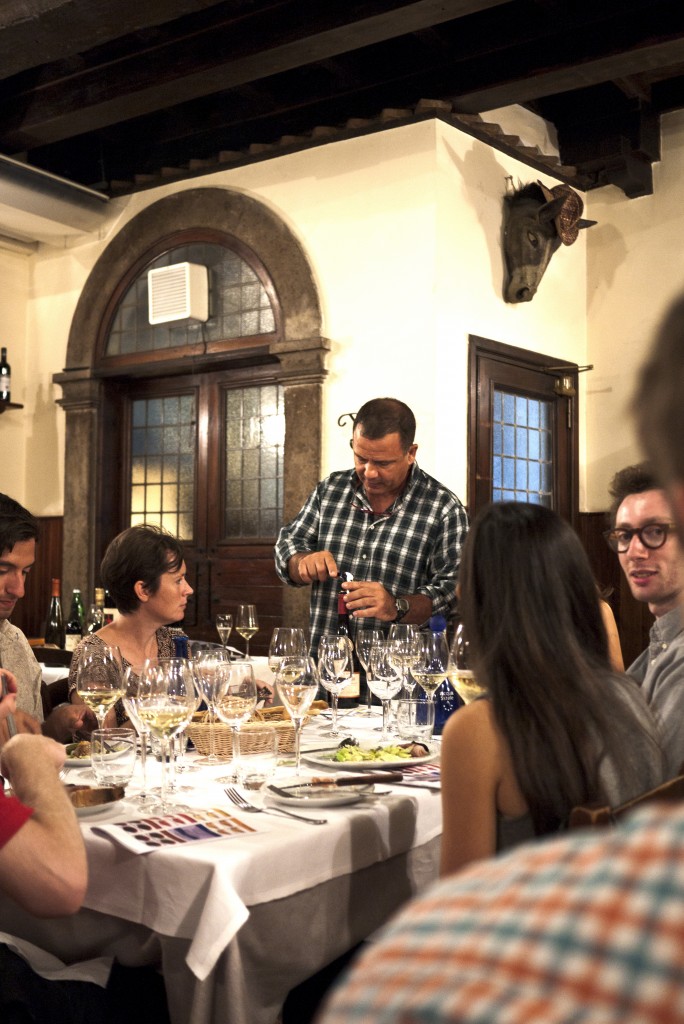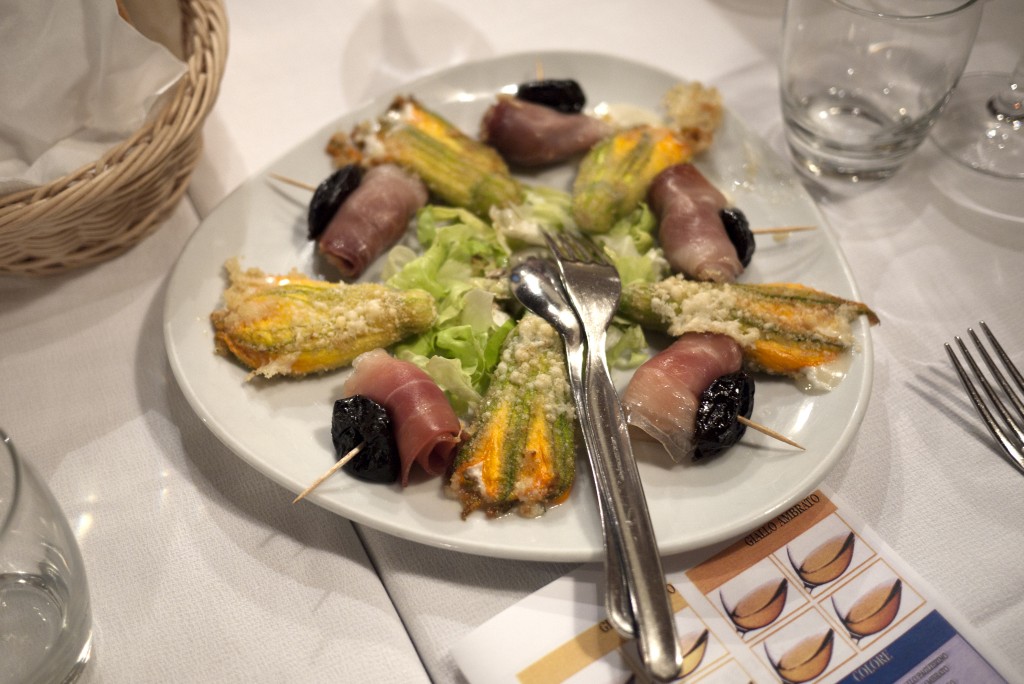
During our first weeks in Rome we were invited to participate in a dinner and wine tasting at the classic restaurant Renato e Luisa located directly across the street from our palazzo. The event took place twice over the course of two weeks to accommodate our large group. In addition to a being lovely evening, the tasting was an informative experience which served as a great introduction to eating out in Rome.
The event began with a lecture from Renato, the owner and sommelier of the restaurant, regarding basic information about the production, selection and serving etiquette of fine wine. We talked mostly about Italian wines but also learned, for instance about the complicated production of champagne. We learned about all aspects of the winemaking process, starting with how the pigment of a wine is derived from the skin of the grape, methods of storing wine as it ages, how the shape of the bottle is specially designed for different wines and finally how to properly open and serve a bottle of wine. After students were asked to try their hand at opening a bottle of sparkling wine, which should be done silently, without popping the cork, we were served a four-course meal with specially selected wine pairings.
The first wine was a sparkling Italian white wine, which was served with a plate of bresaola, cheese, nuts and honey, followed by a still white wine served with prosciutto, dried fruits and stuffed zucchini blossoms. The main course was a green spinach risotto, which came with a red wine. Finally Renato served a simple torte with cream, which he claimed was the first and best dessert that he learned in his culinary career. Everything, from the strength and texture of the cheeses, to the flavor of the freshly baked breads, was specially curated by the restaurant staff to complement the wines. We learned that all qualities of foods are important to take into account when evaluating their compatibility with a wine, not only their general flavor, but also their richness and texture and relationship to the other dishes one will eat throughout the course of the meal.
There were many interactive elements throughout the lecture and the meal; in addition to opening bottles we were asked to identify different scents from vials that represented various notes that a sommelier must be able to recognize in a wine. For me the strangest note was banana, which I have yet to encounter in a glass of wine. We also were able to see many old-fashioned tools used by sommeliers to test and smell wines, including a special saber which can be used by a well-trained hand to swiftly cut off the top of a bottle of champagne.
Although Renato only imparted a fraction of the presumably encyclopedic knowledge of wine that one must have as a sommelier, we are certainly more prepared to make educated decisions about pairing wines both in a restaurant and when we prepare a meal with friends at home. This knowledge is essential to the experience of Italy’s rich culinary tradition, but the decision can often be daunting, especially when one does not understand the fundamental characteristics and qualities that define different wines. Armed with our special sommelier’s booklets that were distributed during the tasting, as well as our memories of Renato’s lecture, we will be able to enjoy great pairings and perhaps create some good impressions during our stay in Rome.
For more information and to visit the restaurant:
Renato e Luisa
Via dei Barbieri, 25, 00186 Rome
www.renatoeluisa.it/
Photos by Richard Nelson-Chow


